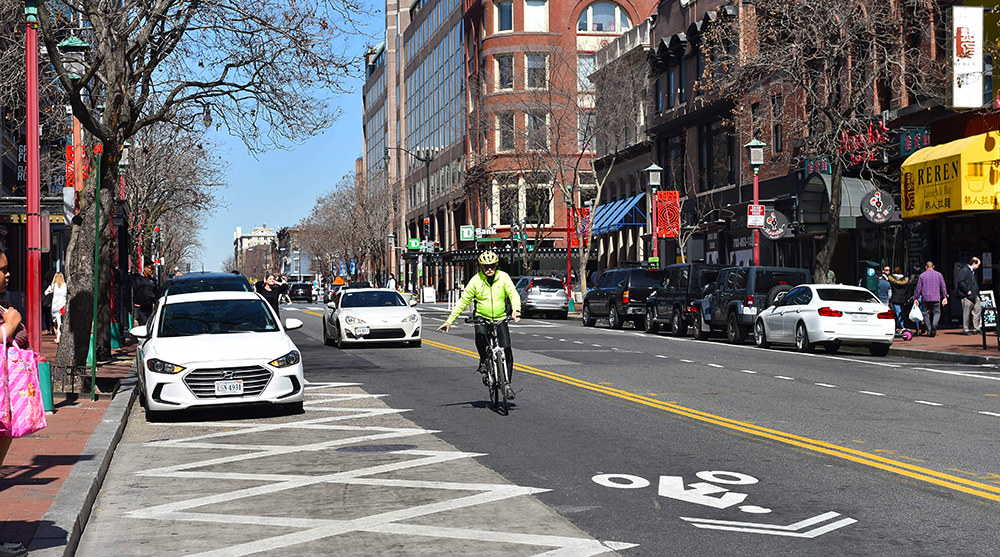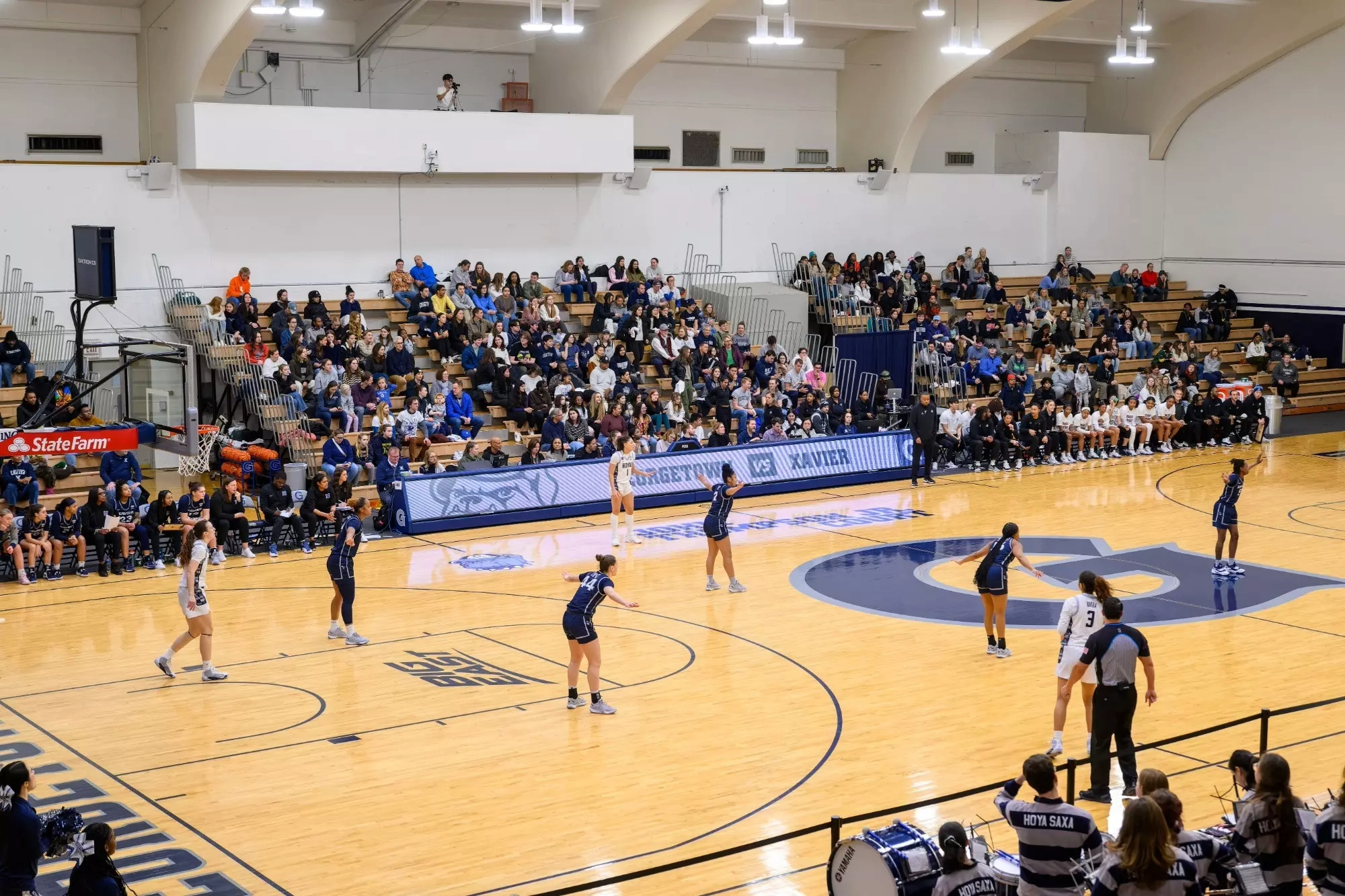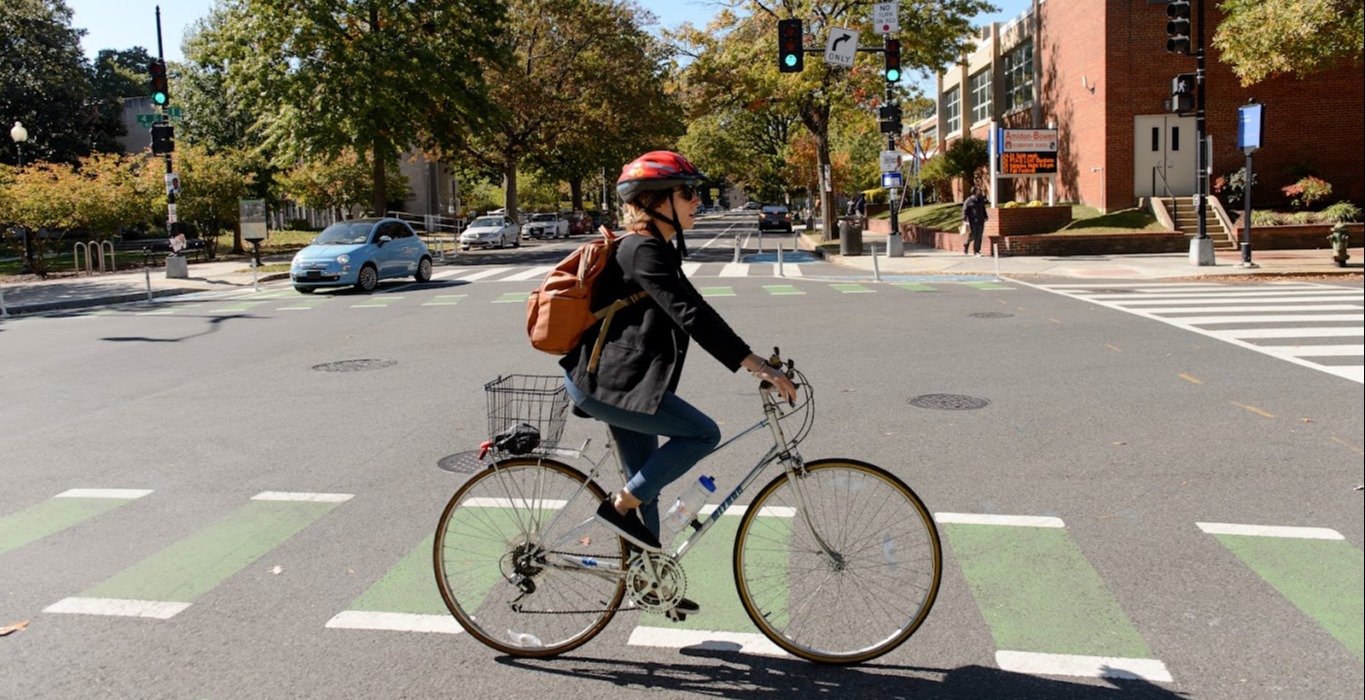The District of Columbia has over 100 miles of bike lanes and more than 60 miles of trails to discover, providing bicyclists with lots of space to get around town. For added security and confidence, there are 24 miles of protected bike lanes, so even the most novice of bicyclists can feel safer riding throughout the city. And there's more where that came from! The District Department of Transportation (DDOT) plans to install an additional 20 miles of protected bike lanes by the end of this year, ten of which are already completed.
While it's always important to practice proper bike etiquette and follow the rules of the road, there are even more safety precautions that bicyclists should know since the COVID-19 pandemic. goDCgo encourages you to be a "roll model" for others and use your best biking judgement. That means staying alert, maintaining safe speeds, keeping right and passing left, standing aside if standing still, and being courteous and considerate when sharing the road. Review more of the bike safety tips so you're properly prepared for your next ride and beyond.
Safety Suggestions
- Wear a helmet. Per DC law, bike riders under the age of 16 are required to wear a helmet. Adults are also highly encouraged to wear a helmet because it can dramatically reduce the risk of head injury in the case of an accident.
- Be alert. Scan the road and always know your surroundings.
- Be vocal. Give an audible signal or ring your bell when passing other bicyclists or pedestrians and pass only on the left.
- Use hand signals. Tell motorists, other bicyclists, and pedestrians what you intend to do. Be predictable!
- Watch behind you. Keep track of traffic behind you, so you’ll know whether you have enough room if you must swerve suddenly out of the door zone. A mirror helps you see traffic behind you.
- Wear reflective clothing. Wear bright colors and/or reflective straps so you will be more visible to others. This is especially important when bike riding at night.
Road Rules
- Use the street. You should only ride on sidewalks when necessary and always yield to pedestrians because they have the right-of-way. Per DC law, bicyclists are not allowed to ride on the sidewalk in the Central Business District.
- Follow all traffic laws and regulations. Bicyclists are required to obey all regulatory signs and traffic lights.
- Beware of parked cars. Ride at least five feet away from parked vehicles and watch for people exiting—doors can open at any time.
- Be careful at intersections. Do not stop in crosswalks and watch for crossing vehicle traffic at intersections, even if you have the right-of-way.
- Never ride against traffic. Ride with traffic to avoid potential crashes.
- Ride in a straight line. Ride in a straight line at least 5 feet away from parked vehicles and avoid weaving between parked vehicles, except when passing.
- Use the entire travel lane. Move toward the center when the lane is too narrow for vehicles to pass safely or when you’re moving at the same speed as traffic.
- Use bike lights. Per DC law, a front white headlight that is visible for 500 feet and a rear red reflector or taillight visible from 300 feet are required when riding at night.
Pandemic Precautions
- Social distance. Keep at least six feet of distance between you and others at all times. Leave any area where you cannot maintain a social distance. If a trailhead looks too crowded, don’t use it and turn back around.
- Practice self-care. Carry water, hand sanitizer, and disinfecting wipes to further protect yourself.
- Do not touch your face. Avoid touching your face with unwashed hands, especially your eyes, nose, or mouth.
- Wear a face mask. As a voluntary, extra protective measure, wear a face mask should you encounter other bicyclists or pedestrians while riding.
- Wash or sanitize your hands frequently. When washing your hands, make sure you do so for at least 20 seconds after your bike ride, especially if you used a bikeshare option like Capital Bikeshare or a dockless vehicle.
- Use local trails. Popular trails are likely to be more crowded, so use precautions and social distance. Make more use of your own local trails or nearby walking and biking infrastructure that are close to home.
- Stay home if you exhibit any symptoms of illness. To further reduce the spread of COVID-19, it's highly advised that you stay home and get tested immediately if you show any symptoms of illness.





.jpg)


